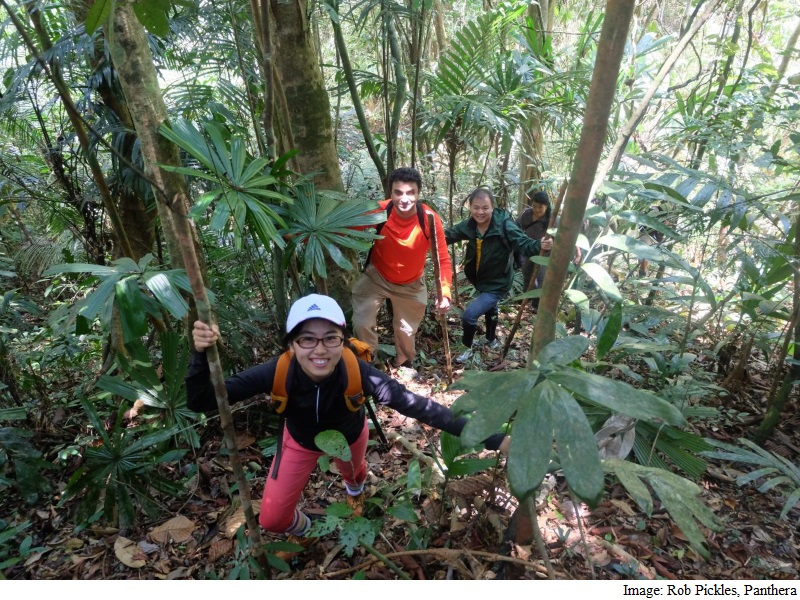- Home
- Science
- Science News
- Artificial Intelligence to Help Curb Poaching: Study
Artificial Intelligence to Help Curb Poaching: Study

With support from the US National Science Foundation (NSF) and the US Army Research Office, researchers are using AI and game theory to solve poaching, illegal logging and other problems worldwide, in collaboration with researchers and conservationists in the US, Singapore, the Netherlands and Malaysia.
"This research is a step in demonstrating that AI can have a really significant positive impact on society and allow us to assist humanity in solving some of the major challenges we face," said Milind Tambe, professor of computer science and industrial and systems engineering at the University of Southern California (USC).
"In most parks, ranger patrols are poorly planned, reactive rather than pro-active and habitual," said Fei Fang, PhD candidate from the University of Southern California (USC).
Fang is part of an NSF-funded team at USC led by Tambe who is also director of the Teamcore Research Group on Agents and Multiagent Systems.
The team's research idea - a game theory - uses mathematical and computer models of conflict and cooperation between rational decision-makers to predict the behaviour of adversaries and plan optimal approaches for containment.
"This research is a step in demonstrating that AI can have a really significant positive impact on society and allow us to assist humanity in solving some of the major challenges we face," Tambe noted.
The researchers first created an AI-driven application called PAWS (Protection Assistant for Wildlife Security) in 2013 and tested the application in Uganda and Malaysia in 2014.
PAWS used data on past patrols and evidence of poaching. Now, as PAWS receives more data, the system "learns" and improves its patrol planning. Already, the system has led to more observations of poacher activities per kilometre.
The system can also take into account the natural transit paths that have the most animal traffic - and thus the most poaching - creating a "street map" for patrols.
The application also randomises patrols to avoid falling into predictable patterns.
The team recently combined PAWS with a new tool called CAPTURE (Comprehensive Anti-Poaching Tool with Temporal and Observation Uncertainty Reasoning) that predicts attacking probability even more accurately.
The researchers presented the findings at the "AAAI Conference on Artificial Intelligence" in Arizona recently.
For the latest tech news and reviews, follow Gadgets 360 on X, Facebook, WhatsApp, Threads and Google News. For the latest videos on gadgets and tech, subscribe to our YouTube channel. If you want to know everything about top influencers, follow our in-house Who'sThat360 on Instagram and YouTube.
Related Stories
- Samsung Galaxy Unpacked 2025
- ChatGPT
- Redmi Note 14 Pro+
- iPhone 16
- Apple Vision Pro
- Oneplus 12
- OnePlus Nord CE 3 Lite 5G
- iPhone 13
- Xiaomi 14 Pro
- Oppo Find N3
- Tecno Spark Go (2023)
- Realme V30
- Best Phones Under 25000
- Samsung Galaxy S24 Series
- Cryptocurrency
- iQoo 12
- Samsung Galaxy S24 Ultra
- Giottus
- Samsung Galaxy Z Flip 5
- Apple 'Scary Fast'
- Housefull 5
- GoPro Hero 12 Black Review
- Invincible Season 2
- JioGlass
- HD Ready TV
- Laptop Under 50000
- Smartwatch Under 10000
- Latest Mobile Phones
- Compare Phones
- Moto G15 Power
- Moto G15
- Realme 14x 5G
- Poco M7 Pro 5G
- Poco C75 5G
- Vivo Y300 (China)
- HMD Arc
- Lava Blaze Duo 5G
- Asus Zenbook S 14
- MacBook Pro 16-inch (M4 Max, 2024)
- Honor Pad V9
- Tecno Megapad 11
- Redmi Watch 5
- Huawei Watch Ultimate Design
- Sony 65 Inches Ultra HD (4K) LED Smart TV (KD-65X74L)
- TCL 55 Inches Ultra HD (4K) LED Smart TV (55C61B)
- Sony PlayStation 5 Pro
- Sony PlayStation 5 Slim Digital Edition
- Blue Star 1.5 Ton 3 Star Inverter Split AC (IC318DNUHC)
- Blue Star 1.5 Ton 3 Star Inverter Split AC (IA318VKU)

















